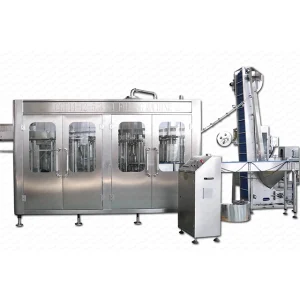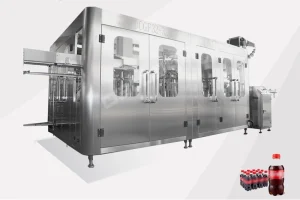When it comes to packaging beverages, the material you choose plays a crucial role. It impacts everything from the taste of the drink to the overall consumer experience, including convenience, environmental concerns, and brand image. Whether you’re selling soft drinks, juices, water, or beer, understanding the strengths and drawbacks of different materials—plastic, glass, and aluminum—can help you make the right choice for your product. In this article, we’ll explore each of these materials and offer insights into which one is the best for your beverage.
The Power of PET: Lightweight and Eco-Friendly
Polyethylene Terephthalate (PET) is one of the most commonly used materials for beverage containers. Known for its durability, flexibility, and clarity, PET is an excellent choice for plastic bottles and containers. It’s also highly resistant to impact, making it a practical option for various beverages, including water, soft drinks, and juices.
One of the key benefits of PET is its recyclability. PET containers are 100% recyclable, which helps reduce the overall environmental impact when disposed of properly. Additionally, manufacturing PET requires less energy and water compared to other materials like aluminum or glass. This makes PET a more sustainable choice when considering production processes.
However, the downside of PET is that recycling rates are still relatively low, and plastic waste remains a significant environmental concern. While PET bottles are lightweight, their widespread use and improper disposal contribute to pollution, particularly in oceans and landfills.

Aluminum: A Popular Choice with Environmental Trade-Offs
Aluminum is widely used for canned beverages, including soft drinks, beer, and energy drinks. The main advantages of aluminum containers are their ability to preserve the quality of the drink and their recyclability. Aluminum cans are airtight, which helps maintain the freshness and taste of the beverage inside. Plus, they are lightweight, making them easy to transport and store.
Recycling aluminum is a major environmental benefit. Aluminum cans can be recycled infinitely without losing quality, which is a significant advantage over materials like PET. In fact, many brands use recycled aluminum to produce new cans, reducing the need for virgin materials.
However, the environmental impact of producing aluminum is not without concern. The process of extracting bauxite, the raw material used to make aluminum, involves harmful mining practices that contribute to ecosystem destruction and pollution. The environmental footprint of aluminum production can be significant, even though the material itself is recyclable.
Glass: Classic and Reusable, but Heavy
Glass has long been a preferred packaging material, particularly for premium beverages like wine and spirits. One of its main advantages is that it does not alter the taste of the drink, which makes it a popular choice for high-end brands. Additionally, glass is 100% recyclable and can be reused without compromising its quality.
However, glass bottles come with several challenges. They are heavy, which makes transportation more expensive and energy-intensive. The fragility of glass also means that it needs to be carefully handled during shipping, which can increase packaging and transport costs. For many brands, the high cost of shipping glass bottles outweighs the benefits of using this material.
While glass is certainly more eco-friendly than plastic in terms of recycling, its environmental footprint during production and transport can be a drawback for mass-market beverages.

Which Beverage Container is the Best for Your Product?
When choosing the best material for your beverage container, several factors need to be considered: environmental impact, transportation costs, recyclability, and consumer preferences.
Plastic (PET) is a great option if you’re looking for a lightweight, cost-effective material. It offers convenience for consumers, and its production is less energy-intensive than glass or aluminum. However, its recycling rate is low, and plastic waste remains a significant environmental issue.
Aluminum is ideal for preserving the quality of drinks and is easily recyclable. If you can source cans made from recycled aluminum, this is the most eco-friendly option. However, the environmental damage caused by bauxite mining is a major downside to this material.
Glass offers the highest quality in terms of taste preservation and recyclability. It is reusable and 100% recyclable. But due to its weight and the higher transport costs associated with it, it’s often replaced by plastic or aluminum for mass-market products.
Conclusion
Choosing the right beverage container is more than just a marketing decision—it’s also an environmental choice. While all three materials—PET, aluminum, and glass—have their benefits and drawbacks, aluminum cans made from recycled materials offer the best balance of sustainability and practicality. However, PET remains a popular choice due to its lightweight nature and energy-efficient production process.
At DATONG, we understand the importance of packaging in delivering quality products to consumers. Whether you’re looking for beverage filling machines, labeling equipment, or full turnkey projects for your production line, we provide high-quality solutions tailored to your needs. Contact DATONG today to learn how we can help you with all your beverage packaging requirements!
